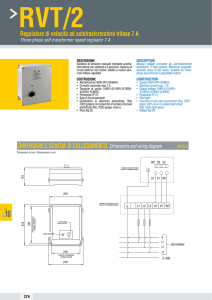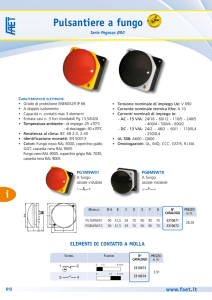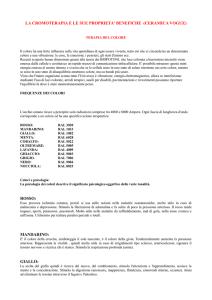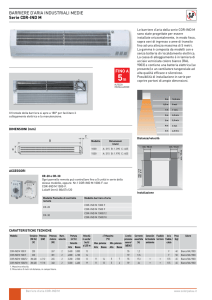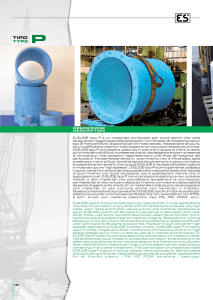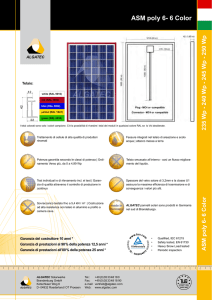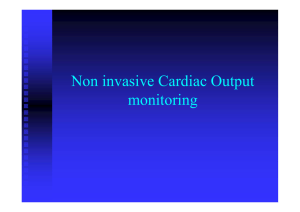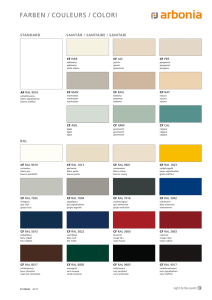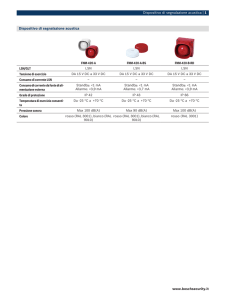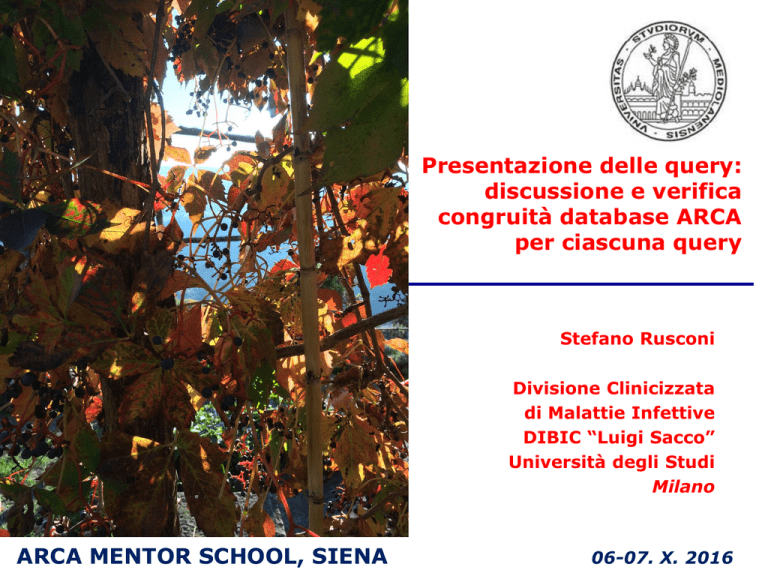
Presentazione delle query:
discussione e verifica
congruità database ARCA
per ciascuna query
Stefano Rusconi
Divisione Clinicizzata
di Malattie Infettive
DIBIC “Luigi Sacco”
Università degli Studi
Milano
ARCA MENTOR SCHOOL, SIENA
06-07. X. 2016
Query
Caratteristiche dei pazienti che sono
messi in trattamento con terapia a
due farmaci DRV+3TC vs. ATV+3TC,
analisi di efficacia e durability del
trattamento.
Raccomandazioni dalle LG
Sean G. Kelly et al., 2016
Studi AtLaS e SALT
«Efficacia e sicurezza a lungo
termine della semplificazione
di una duplice terapia basata
su ATV/r e 3TC»
Which patients? what regimens?
1 pill
2 pill
MONO-therapy
DUAL therapy
switch strategy
no history of PI failure
no need of NRTIs
nadir CD4 > 200 cells/mm³
optimal adherence
long history of suppression
low HIV DNA
no HCV coinfection (?)
switch strategy
no history of PI failure
no need of 2NRTIs
S Nozza et al.
Dual DRV/r & 3TC: OSR + UCSC
JAIDS 2016, in press
1a)
Treatment discontinuation
1c)
Treatment discontinuation for any cause
1b)
1d)
Log rank test: p=0.004
Virological Failure
Treatment discontinuation for adverse events
Log rank test: p=0.006
JAIDS 2016, in press
**
**
**
*
**
**
*
**
**
**
**
**
*
**
*
**
**
**
*
**
**
**
**
**
**
*
*
*
JAIDS 2016, in press
**
*
**
*
*
Caratteristiche dei
pazienti che sono messi
in trattamento con
terapia a due farmaci
DRV/r+3TC vs.
ATV/r+3TC, analisi di
efficacia e durability del
trattamento.
Query del Gruppo C
variabili:
• età
• sesso
• presenza di coinfezione HCV
• modalità trasmissione
• genotipo storico
• AIDS si/no
• CD4 e carica virale pre-terapia basale
• CD4 e carica virale pre-switch alla dual
•
•
•
•
•
•
•
•
numero linee terapeutiche precedenti
fallimenti virologici
regime precedente lo switch
motivo di switch
data inizio HAART
durata soppressione virologica
durata infezione HIV (dalla diagnosi)
lunghezza totale del follow-up sotto i trattamenti in
oggetto
• Cause di discontinuation
• Resistenze al fallimento
• assetto immunologico durante il trattamento
Query
Frequenza di fallimento della terapia
di prima linea basata su INI vs. PI a
partire dal 2008 (anno di inizio INI),
durability dei due tipi di trattamento
e caratteristiche del paziente
selezionato per DTG in prima linea
(inclusa analisi di efficacia per followup possibile ad oggi).
July 2016 Updates on Recommended
Regimens for First-line ART
3-drug regimens
Regimen
DHHS[1]
IAS-USA[2]
DTG/ABC/3TC
DTG + TAF/FTC
DTG + TDF/FTC
EVG/COBI/TAF/FTC
EVG/COBI/TDF/FTC
RAL + TAF/FTC
RAL + TDF/FTC
DRV + RTV + TAF/FTC
DRV + RTV + TDF/FTC
Preferred/recommended
1. DHHS Guidelines. July 2016.
2. Günthard HF, et al. JAMA. 2016;316:191-210.
• DHHS[1]
– Recommended regimens
include 3 INSTIs and 1 boosted
PI
– Primary change since Jan 2016
update is addition of TAF/FTC
• IAS-USA[2]
– All recommended regimens
include INSTI + TAF/FTC or
ABC/3TC
– Major changes since 2014
update include removal of
NNRTIs, boosted PIs, and TDF
Doge Antonio, 2016
Frequenza di fallimento della terapia di prima linea basata su INI vs. PI
a partire dal 2008 (anno di inizio INI), durability dei due tipi di
trattamento e caratteristiche del paziente selezionato per DTG in
prima linea (inclusa analisi di efficacia per follow-up possibile ad oggi)
Gruppo B
Attività svolte
• Criteri di inclusione
• Pazienti HIV che iniziano il primo regime terapeutico
• Trattati dal 2008 in poi
• Trattati solo con INI, ma senza PI né NNRTI
• Trattati solo con PI, ma senza INI né NNRTI
• Creazione degli script SQL da parte di tutto il gruppo per l’estrazione
dei dati secondo i criteri di cui sopra
• Spiegazione della struttura base di una query SQL: SELECT, FROM, WHERE,
LIKE, AND, OR, YEAR, JOIN, ecc.
• Elaborazione del risultato della query
• Pazienti trattati con INI: 98 (DTG: 28; RAL: 55; EVG: 15)
• Pazienti trattati con PI: 726 (da revisionare tramite esclusione di terapie non
triple)
Query
Impatto delle mutazioni di resistenza
agli NRTI o PI o NNRTI sulla terapia
con INI / DTG nel naive con resistenza
trasmessa e nel paziente con
pregressi fallimenti. Confronto con
impatto delle stesse mutazioni sulla
terapia con PI (caso-controllo 2:1?).
Hotel Nhow, Milano, 2012 pausa pranzo con Antonio Di Biagio e Andrea De Luca
Effect of transmitted drug resistance on virological
and immunological response to initial combination
antiretroviral therapy for HIV (EuroCoord-CHAIN
joint project): a European multicohort study
Kaplan-Meier estimates for virological failure at 12 months were
4·2% (95% CI 3·8–4·7) for patients in the no TDR group, 4·7% (2·9–
7·5) for those in the TDR and fully-active cART group, and 15·1%
(11·9–19·0) for those in the TDR and resistant group (log-rank
p<0·0001).
In stratified analysis, the hazard ratio for the risk of virological failure
in patients with TDR who received fully-active cART that included a
non-nucleoside reverse transcriptase inhibitor (NNRTI) compared
with those without TDR was 2·0 (95% CI 0·9–4·7, p=0·093).
L Wittkop et al. Lancet I.D. Volume 11, No. 5, p363–371, May 2011
Query
% of RAL virological failures
(overall); % RAL virological
failures with mutations; % of RAL
virological failures without
mutations.
INI resistance is uncommon in drug
naïve patients
• Increased use of INSTI not
paralleled by increased
INSTI TDR
– Only one case in 1316
(0.1%) with T66I but the
sample dates back to
2001
– No cases following
clinical introduction of
INSTI
• Likewise, minor INSTI
resistance mutations (e.g.
74M, E92G, T97A, E138K,
R263K) also do not
increase
Scherrer, JID 2016
Time trends of INSTI resistance in
treatment failing patients
•
•
•
A total of 57 persons with intermediate or high level INI resistance were identified January 2009 to
October 2015
Apparent increase in selection of mutations at integrase codons 66, 140, 148, 155 and 263
Although the prevalence of INI resistance is increasing, INI resistance remains low in comparison to
RT and PI resistance
Lepik, CROI 2016
One out of five US patients tested (N=1,764) during the first 3 years of InSTI
GRT availability harbored at least one “major” InSTI resistance mutation
1905 sequences analyzed from InSTI GRT, representing 1764 patients in 39 states; 1168 (66%) had paired pol
sequences. The number of tests increased over time, from 73 in 2009 to 1097 in 2011
Hurt C et al CROI 2013 #poster 591
One out of five US patients tested (N=1,764) during the first 3 years of InSTI
GRT availability harbored at least one “major” InSTI resistance mutation
Dolutegravir is likely to be active against most variants
observed, however 43% of patients with InSTI resistance
(8.7% overall) harbored R263K (n=3) or Q148 + G140
and/or E138 mutations (n=151), conferring up to 20-fold
reduced susceptibility to DTG.
1905 sequences analyzed from InSTI GRT, representing 1764 patients in 39 states; 1168 (66%) had paired pol
sequences. The number of tests increased over time, from 73 in 2009 to 1097 in 2011
Hurt, et al CROI 2013 #poster 591
Mutations associated with RAL failure were detected in 12/24 subjects
with an integrase genotype, with the prevalence of Q148H + G140S.
Each extra unit of GSS (p 0.05, OR 2.62; 95% CI 1.00–6.87) was
found to be a associated with response. Weighted-GSS had borderline
statistical significance (p 0.063, OR 2.04; 95% CI 0.96–4.33).
Clin Microbiol Infect. 2013 Jan 4. doi: 10.1111/1469-0691.12100.
Figure 1a. Time to first undetectable HIV-RNA by GSS
1,0
0,8
One minus survival
GSS
<1
1-1.49
1.50+
0,6
0,4
0,2
0,0
0
4
8
12
16
20
24
Weeks
Clin Microbiol Infect. 2013 Jan 4. doi: 10.1111/1469-0691.12100.
Figure 1b. Time to first undetectable HIV-RNA by weighted GSS
1,0
0,8
One minus survival
Weighted GSS
<1
1-1.49
1.50+
0,6
0,4
0,2
0,0
0
4
8
12
16
20
24
Weeks
Clin Microbiol Infect. 2013 Jan 4. doi: 10.1111/1469-0691.12100.
Coronet initiative (a)
T Doyle et al. on behalf of the CORONET Study Group, JAC 2015
Coronet initiative (b)
T Doyle et al. on behalf of the CORONET Study Group, JAC 2015
Coronet initiative (c)
T Doyle et al. on behalf of the CORONET Study Group, JAC 2015
From an internal analysis of ARCA database, 18.4% of patients
receiving Raltegravir regimens experienced a virological failure
(ARCA internal data from 1,456 patients treatments including INI).
A further analysis (Abstract 322 LB OC101, ICAR 2015) conducted
on 1,386 pts (INI-naive 298, INI-experienced 1,088) showed overall:
- Primary resistance to INI had been uncommon in Italy;
- Q148HKR plus G140S or E138K in 1 (0.3%) INI-naïve patient and in
61 (5.6%) INI-experienced patients;
- Modest accumulation of resistance at RAL failure (82% without
any of the three canonical mutations at codons 143, 148, 155);
- Resistance to INI is independent from viral subtype but related to
VL at failure.
Virological failures to raltegravir
(RAL) in ARCA database
Gruppo A
AMS 2016
OBIETTIVI
PRIMARIO
• FALLIMENTI VIROLOGICI A RAL
SECONDARI
• FALLIMENTI VIROLOGICI CON MUTAZIONI
• FALLIMENTI VIROLOGICI SENZA MUTAZIONI
Definizioni
• Tutti i pazienti in terapia con RAL based regimen
• Periodo di arruolamento: 01/01/200831/12/2015
• Pazienti HIV-1 e HIV-2 naïve, INI naive, INI
experienced con età > 18 anni (c.informato)
• Periodo di osservazione almeno 24 weeks
• Due rilevazioni sopra le 50 copie/mL o una
rilevazione >1000 copie/mL
• Mancato raggiungimento <50 copie/ml dopo 24
weeks
Gruppo E:
Valutazione durability delle
terapie HAART di prima
linea dal 2010 al 2016
Caratteristiche tecniche: ottenimento
dati
Dal database ARCA abbiamo selezionato tutti i pazienti con il campo HIV +:
4631
Dal 2010 al 2016 abbiamo selezionato:
1898
Paziente in HAART di prima linea con TDF+FTC o ABC+3TC:
1729 (91%)
I dati che possiamo ottenere
Anno
ABC %
TDF %
ATVb %
DRVb %
EFV %
RPV%
RAL %
EVG %
DTG %
2010
11
89
18
17
31
0
4
0
0
2011
9
91
30
14
33
0
2
0
0
2012
16
84
23
27
32
0
5
0
0.5
2013
13
87
15
39
15
9
11
0.3
0
2014
15
85
12
38
10
11
14
2
2
2015
17
83
10
24
3
16
17
10
16
2016
48
52
0
16
0
8
12
16
48


